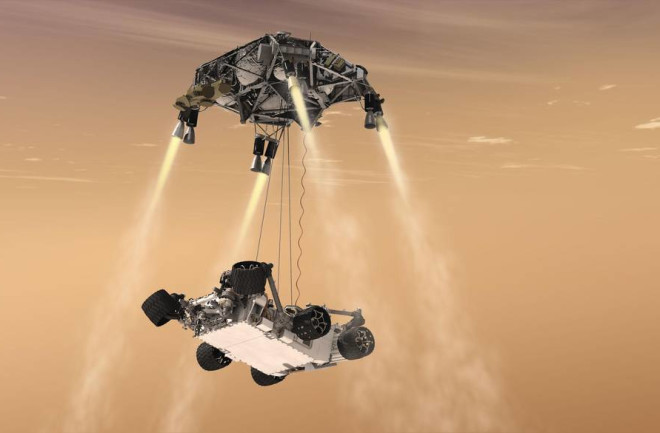When NASA’s Perseverance rover lands on Mars this afternoon, the robot will owe its safe passage to one of the most unlikely pieces of technology developed since the dawn of the Space Age: the Skycrane. This seemingly sci-fi system sees the rover perilously dangle beneath a hovering rocket-powered spacecraft before being gently lowered to the ground (think Tom Cruise dropping from the ceiling in Mission Impossible).
Though once considered an unrealistic solution to the problem of landing large craft on other worlds, today, engineers are confident the strange tech works. NASA has already successfully deployed it once. In 2012, the Skycrane safely set down the Mars Curiosity rover on the Red Planet. But when engineers first cooked up the idea nearly 20 years ago, few were sold on it.
The Skycrane was the consequence of considering — and then ruling out — every other option engineers could think of to land heavy rovers. And while the math checked out, there was no way to truly test it on Earth. So, engineers were left trusting a multi-billion dollar rover to a system that looked so bizarre and complex even the NASA administrator in charge at the time called it crazy.
“We talked about it to no end. If this didn't go right, there would be nowhere to hide because every joe six-pack on the street would be saying that they knew it wouldn't work,” Adam Steltzner of NASA’s Jet Propulsion Laboratory, chief engineer for the Perseverance rover, tells Astronomy. His team dreamed up the Skycrane maneuver, and he was responsible for making sure it worked with Curiosity.
And while the system performed flawlessly in 2012, Steltzner and his team are not taking anything for granted this time around.







